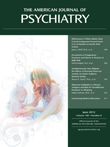Response to Large and Nielssen and Chappell et al. Letters
To the Editor: Drs. Large and Nielssen dispute a claim in the introduction of our article. We wrote that studies of risk factors predicting suicide consistently suggest that suicidal ideation and a history of suicide attempt are among the most salient risk factors for suicide, and we provide four citations summarizing the relationships of attempts and ideation to suicide. The first citation does not refer to an association between ideation and suicide but between attempts and suicide (1). The fourth shows a relationship between ideation and attempts (2). Our second and third citations refer to studies with the Scale for Suicidal Ideation. As shown by Beck et al. (3), worst point suicidal ideation as indicated by the total score of 19 items predicted subsequent deaths by suicide. Brown et al. (4) reported that current suicidal ideation as measured by the total score on the Scale for Suicide Ideation contributed “unique risk estimates of eventual suicide.” Although not all studies agree, many large studies show that suicidal ideation predicts both suicide and suicide attempts (5, 6). Although the association between suicidal ideation and suicidal behavior is modest, we know of no other risk factors that are stronger, with the possible exception of impulsivity/aggression (see Oquendo et al. [7] for a review of the prospective literature), that may be more important at a younger age range. Furthermore, since our paper was published, Gibbons et al. (8) reported that the antisuicidal effect of antidepressants such as fluoxetine and venlafaxine in adults is mediated through amelioration of depression severity. This means that even though suicidal ideation may be a modest predictor of risk in adults, it is important to monitor because it is also a modifiable risk factor.
We appreciate the comments by Dr. Chappell and colleagues and agree that further research is required, as we noted in our paper. We anticipate that the instrument will provide clarity to the field of suicide research by providing comparable data in different populations.
1. : Attempted suicide predicts suicide risk in mood disorders. Acta Psychiatr Scand 1995; 92:345–350Crossref, Medline, Google Scholar
2. : Incidence of suicide ideation and attempts in adults: the 13-year follow-up of a community sample in Baltimore. Psychol Med 2001; 31:1181–1191Crossref, Medline, Google Scholar
3. : Suicide ideation at its worst point: a predictor of eventual suicide in psychiatric outpatients. Suicide Life Threat Behav 1999; 29:1–9Medline, Google Scholar
4. : Risk factors for suicide in psychiatric outpatients: a 20-year prospective study. J Consult Clin Psychol 2000; 68:371–377Crossref, Medline, Google Scholar
5. : The internal struggle between the wish to die and the wish to live: a risk factor for suicide. Am J Psychiatry 2005; 162:1977–1979Link, Google Scholar
6. : Twelve-month prevalence of and risk factors for suicide attempts in the World Health Organization World Mental Health Surveys. J Clin Psychiatry 2010; 71:1617–1628Crossref, Medline, Google Scholar
7. : Prospective studies of suicidal behavior in major depressive and bipolar disorders: what is the evidence for predictive risk factors? Acta Psychiatr Scand 2006; 114:151–158Crossref, Medline, Google Scholar
8. : Suicidal thoughts and behavior with antidepressant treatment: reanalysis of the randomized placebo-controlled studies of fluoxetine and venlafaxine. Arch Gen Psychiatry (Epub ahead of print, Feb 9, 2012)Crossref, Google Scholar



